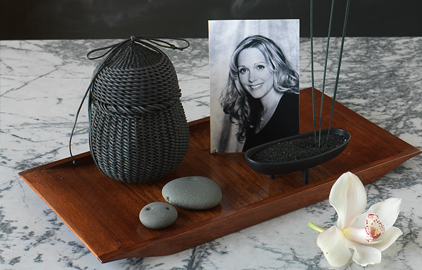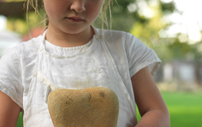Following a death, one of the many questions you or your loved ones will have to address will be what to do with the body. Compared to the potentially steep costs of cemetery burial, you might find cremation to be a highly economical alternative. People choose cremation for a variety of reasons.
What is cremation? How common is it, and what is the cremation process? What are cremation ashes? What is the environmental impact of cremation? How much does cremation cost? We answer these and other questions here.
Things to Know:
- Today, about 40% of Americans choose cremation. In 15 years, an estimated 60% are expected to do so.
- Cremation ashes are returned to the family.
- While cremation does have an environmental impact, there are ways to minimize it.
- The cost of a cremation is significantly lower than the cost of a traditional funeral.
- Most states allow home-based care of the deceased, or a home funeral prior to cremation; should you be inclined towards this option you will want to research your state’s laws. Get in touch with a home funeral consultant near you, through the Home Funeral Directory, or purchase your state’s specific chapter in Joshua Slocum’s book Final Rights: Reclaiming the American Way of Death.
What is cremation?
In basic terms, cremation is the total reduction of a body to bone fragment ashes through intense incineration, usually conducted in crematorium furnaces called retorts.
How common is cremation?
Widespread use of cremation didn’t really take off in America until the 1970’s. Compared to many other countries the American cremation rate, though rising, is relatively behind. Currently, about 40% of Americans choose cremation, and it is estimated that in the next 15 years, as many as 60% of Americans will. Cremation is more common in Canada and Australia than in the U.S. In the United Kingdom, cremation is favored over burial 70% of the time, and in Sweden, 69%. In Japan, where land is scarce and the practice long-ingrained in custom, almost 99% of their deceased’s remains are cremated. Today, Marin County, CA, has the highest cremation rate in the U.S., at 92%. Many other locations in the US also follow suit.
What is the cremation process?
Cremation is a relatively simple process. In many cases, the family of the deceased can obtain the death certificate and necessary permits to transport the body directly to a crematorium — in 43 states, it is legal to care for your own dead and even conduct your own service by having a home funeral (For more information, contact a home funeral consultant near you, or read our articles on Preplanning a Home Funeral or Planning a Home Funeral). Some cremation providers, however, will only work through a funeral home, rather than directly with clients. Alternatively, a memorial service or life celebration may be held long after the body is cremated. For more information, see Preplanning a Funeral or Memorial Service or Planning a Funeral or Memorial Service.
The body is placed in a container or shroud before being transported to the crematorium. You do not need to buy a coffin, but some states require some kind of alternative container, often little more than a simple cardboard box — your service provider will inform you of your choices.
Once the body is at the crematorium, the cremation provider removes items from the body that the family does not want be cremated, such as jewelry, and medical devices, such as pacemakers, that cause safety hazards during the cremation. The crematorium operator should tag the body to properly identify the cremated remains and ensure the family receives the correct cremated ashes.
The body is then placed in the crematorium furnace, or “retort,” and is incinerated at temperatures of 1400°F to 2000°F over the course of about two to three hours, until the body has been totally reduced to a fine powder of bone fragments.
What is witnessing?
Some crematoriums allow for witnessing, where immediate family members witness the body enter into the retort. Most family members choose to depart once the body has fully entered the retort, but some prefer to wait for the cremation to be completed and then witness the removal, sifting, and pulverizing of the cremation ashes prior to inurnment. The filled cremation vessel or urn can then be handed to them on the spot. Some family members find reassurance and peace of mind in this. Some crematoriums offer modern, state-of-the art witnessing surroundings, comfortable, clean and well-kept, with furniture to sit and watch. But retort witnessing areas can also be gritty, industrial and unfriendly, and you should be sure to ask what to expect. Some consumers report witnessing to be an underwhelming experience. It is highly dependent on the funeral provider and is usually associated with added cost.
What are cremation ashes?
After the cremation, about five pounds of bone fragments remain. Once these fragments are cooled, the crematorium operator removes all metal debris, such as surgical pins and titanium limbs/joints. He or she then pulverizes the remaining bone fragments into a fine powder. In volume, picture something like a five-pound bag of sugar, usually white or light gray in color, although this can be dependent on the clothes they may be wearing when they enter the retort. The ashes are then inurned, either in a cardboard or plastic container (which may be listed as “temporary containers,” though their permanency of use, of course, is up to you) or a cremation vessel or cremation urn, purchased from the crematorium or a separate provider. The ashes are then returned to the family to be kept, scattered, or buried. The consistency of cremation ashes is variable, depending on the equipment of the crematory. While oftentimes the ashes are a fine and uniform powder, it is not unusual to come across chunks of bone or teeth, flecks of mercury or other metals that were not removed from the body. Keep this in mind if you are considering scattering.
What about cremation vessels or cremation urns?
All crematoriums are required to provide a container for ashes, but they are generally meant to be temporary, and can be unattractive plastic or even cardboard containers. You may want to inquire beforehand what sort of container they provide. Cremation urns vary greatly in price — they can be as cheap as $50 or as expensive as $2,000 or more. You do not have to purchase your cremation urn from the cremation service provider, so be sure to comparison shop before making your decision.
What is the environmental impact of cremation?
Cremation does have an environmental impact, but it is less environmentally invasive than traditional burial. It can be made even more so by taking certain steps, such as by requesting the removal of any silver-mercury amalgam fillings from the deceased’s teeth prior to entering the retort. You may wish to verify beforehand that the funeral provider will conduct this service.
Be aware, there is a growing body of research suggesting that standard crematoriums emit harmful gases, such as nitrogen, carbon monoxide, mercury, and persistent organic pollutants.
How much does cremation cost?
Most estimates put the average cost of cremation between $1,700 and $1,800. However, direct cremation, in which the body goes directly to the crematorium without a viewing or service, can cost as little as $800. As a comparison, the National Funeral Directors Association estimated in 2009 the average cost of a funeral burial with embalming, casket, and vault (required by most cemeteries) at $7,755 before including the costs of a cemetery plot, cemetery marker, and miscellaneous items, such as flowers and obituaries. Obviously, cremation can considerably lessen the financial burden of a death. At the same time, it is easy to overpay or purchase unnecessary products or services in so-called funeral packages. To find the best prices nearest you, we recommend you get in touch with your local chapter of the Funeral Consumer’s Alliance, a non-profit funeral consumer advocacy organization with affiliates throughout the country.
What are the special considerations of cremation?
Because cremation costs and services vary greatly among providers, choose your cremation provider with care. It is important to educate yourself fully on after-death legalities, as well as your rights as a funeral consumer, as stipulated in the FTC’s Funeral Rule. We at SevenPonds highly encourage you to preplan well before an expected death; we also encourage you to consider green burial as a wholesome alternative. For more information, see Choosing Green Burial.
If you choose to keep the body for a home funeral prior to cremation, an option that brings solace to many, you may be met with some resistance from local municipalities. Be sure to research state, local, and federal laws thoroughly, as these vary considerably by location; in most, but not all cases, you should be able to obtain and complete a death certificate, other required after-death documents, and the burial transit permits. However, you must be sure to complete all these documents accurately and completely. For more information, get in touch with a home funeral consultant, or read our articles on Preplanning a Home Funeral or Planning a Home Funeral, or consider purchasing the applicable chapter addressing your state's laws in Joshua Slocum's book Final Rights: Reclaiming the American Way of Death.
For more information:
Cremation Society of North America
www.cremationassociation.org
Funeral Consumers Alliance
www.funerals.org







